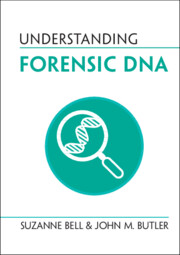2 results
9 - Emerging Issues
-
- Book:
- Understanding Forensic DNA
- Published online:
- 02 September 2022
- Print publication:
- 22 September 2022, pp 138-154
-
- Chapter
- Export citation

Understanding Forensic DNA
-
- Published online:
- 02 September 2022
- Print publication:
- 22 September 2022

